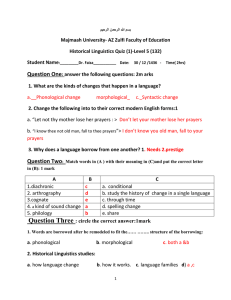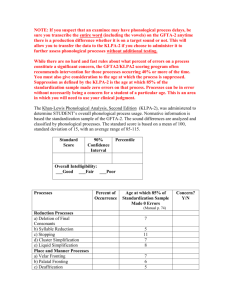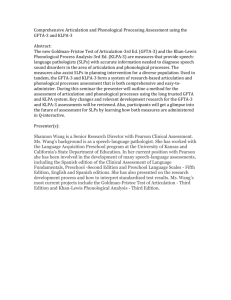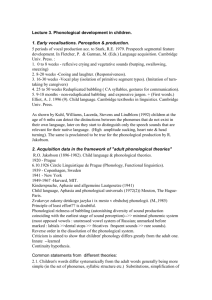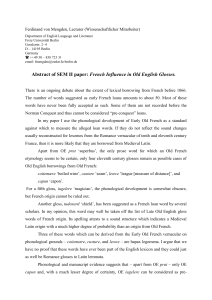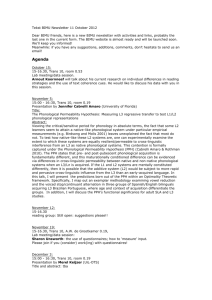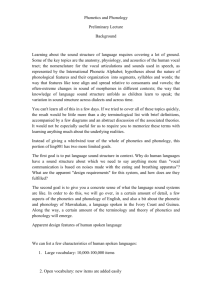Linguistics-5ed-p146-147-(function-of
advertisement
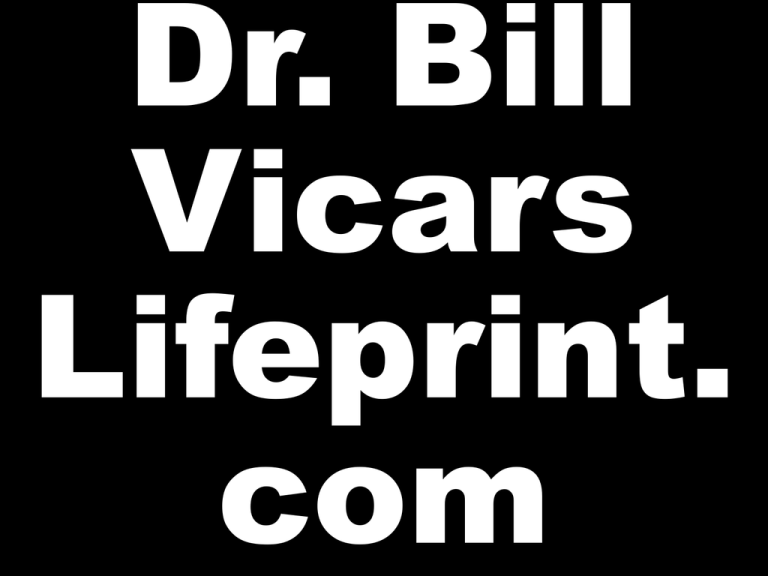
Dr. Bill Vicars Lifeprint. com ASL Linguistics: The Function of Space If there is no identifiable reason (other than, “That is how Deaf people do it”) that we sign FOR at “head level” FEEL on the chest, or NOW at waist level we can say that the “location or space” is what? Phonological / Articulatory If space is just a non-meaningful part of building a sign it is considered what? Phonological / Articulatory If you change space and it builds a new sign (a new meaning) then use of space is what? Morphological New topic… If you use space to construct sentences (ex: establish subject and object) it is… Syntactical (and also still morphological) Consider: SUMMER UGLY DRY In those signs, space or location simply provide what? Phonological Contrast Which means that space is what makes those signs look different. If we use space to indicate a person by pointing to where he is or was we are using space for… Referential Functions If we use space to indicate where something is in a 3D framework we can say its function is… Locative The face that CL:3 “CAR” has a front and back or that we sign things from our point of view is using space to indicate… a “Frame of Reference” Relative vs Absolute (p147 5th Ed) We can also use space for “role shifting” “eye gaze” or body/head position changes to indicate… Narrative Perspective. What is “Phonological Contrast” good for? Phonological Contrast makes signs look different. (But the specific contrast itself is meaningless.) Name 4 types of Phonological Contrast: handshape location orientation movement [We call these things what?] In general we call them parameters of signs. Or parts of signs. If a particular handshape, location, orientation, or movement has no independent meaning we could call it what? You could “still” call it a parameter or part of a sign. More specifically though it can be considered a phoneme. If a particular handshape, location, orientation, or movement HAS independent meaning we could call it what? You could “still” call it a parameter or part of a sign. More specifically though it can be considered a morpheme. Generally in any two different signs at least one parameter must be different. What if two people sign something and no parameters are different? They are doing the same sign. We know that handshape, location, orientation, and movement provide 4 types of Phonological Contrast. What can provide morphological contrast? Actually, handshape, location, orientation, and movement can provide EITHER (meaningless) phonological contrast OR (meaningful) morphological contrast! If the contrast is meaningless we CALL it phonological. If the contrast carries meaning we CALL it morphological contrast. Puzzle for you: Two people each did a sign. The sign done by each person had the exact same parameters (including facial expression) as the sign done by the other person – yet each person’s sign meant something different. How is this possible? Give me an example. Dr. Bill Vicars Lifeprint. com

